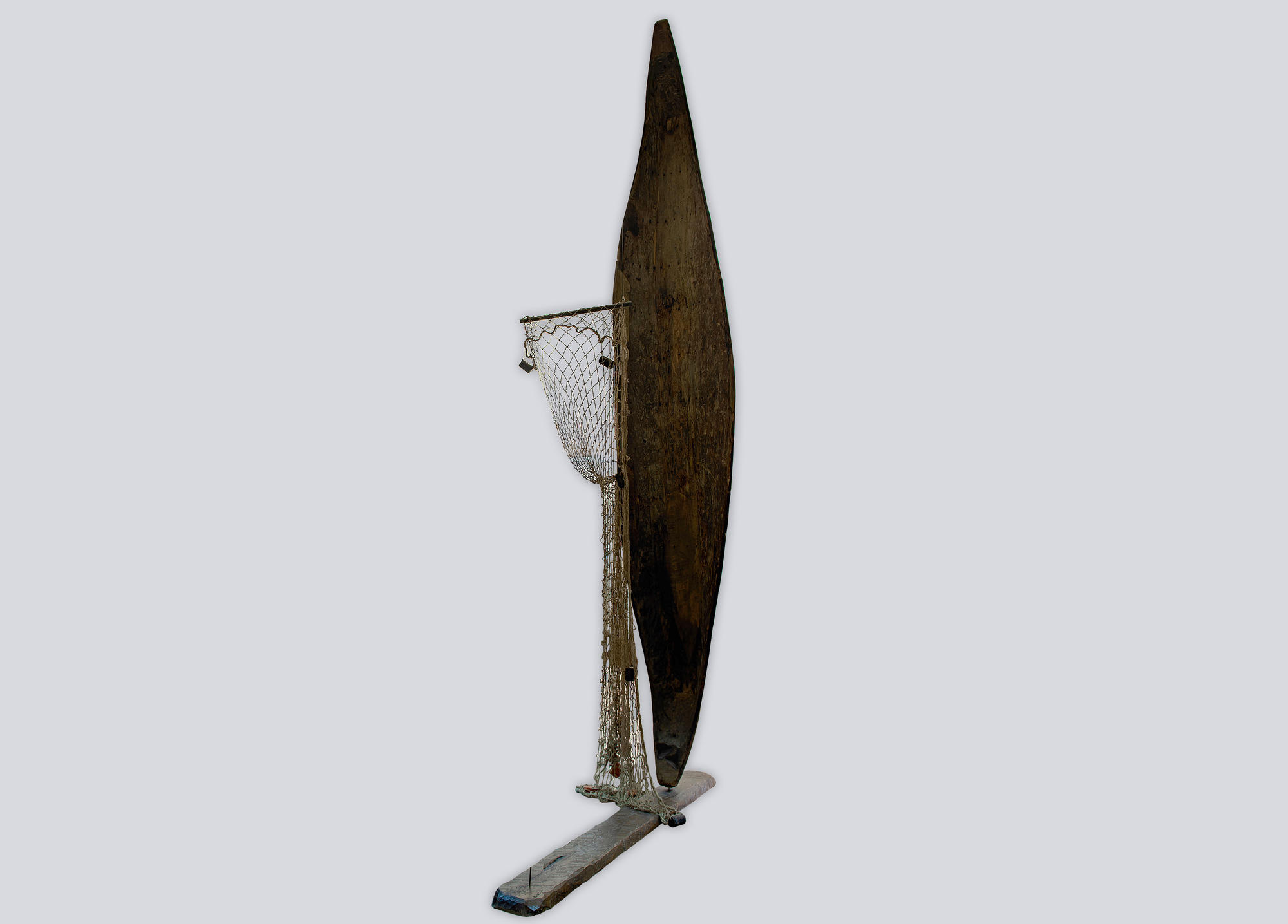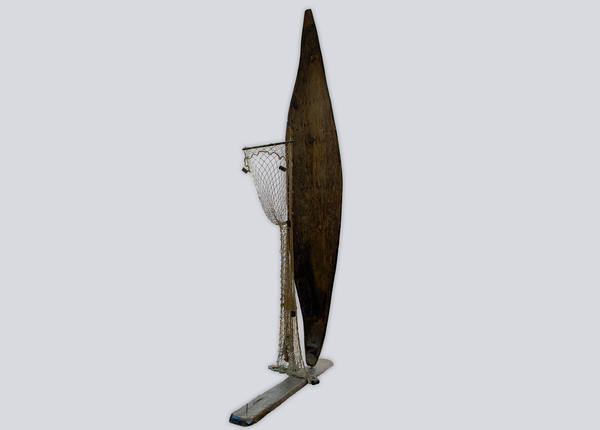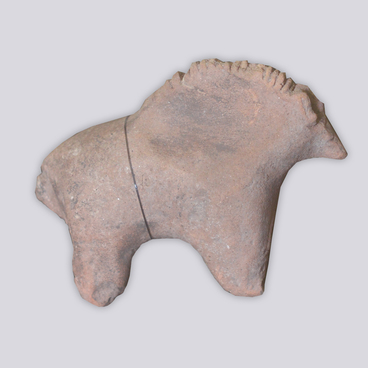In the 8th - 5th millennium BC, the economic life of inhabitants of the Volga region was based on fishing. People in this area often settled on the shores of reservoirs - in particular near numerous lakes.
Log boat
Creation period
1940s-1970s
Dimensions
457x75x47cm
Technique
Trimming, chiselling
Exhibition
3
Open in app#1
Log boat
#7
#8
Pike was the basis of the diet of local residents. Researchers who found numerous ancient remnants of fish bones in the territories of settlements noted that about half - and sometimes up to 80% - of such findings were pike bones. Also ancient people ate breams, zanders, carps, perches, catfishes, burbots and roaches.
#9
While in the 5th millennium BC the main fishing gear of the fishermen were the cribs, sharps and harpoons, by the 3d millennium they have mastered nets as well. This is confirmed by stone sinkers for nets, wooden floats and mesh imprints on pottery found in the settlements.
Depending on the type of the pond and time of the year, fishermen used different methods of fishing. In winter they would put nets under the ice or make holes. In the warm season they used log boats or single-tree shuttles - boats made of a solid log.
Depending on the type of the pond and time of the year, fishermen used different methods of fishing. In winter they would put nets under the ice or make holes. In the warm season they used log boats or single-tree shuttles - boats made of a solid log.
#10
Such vessels appeared almost simultaneously in many peoples of Europe. They were comfortable, light, durable and multifunctional. The size of such boats varied: the smallest could take only a couple of people, while the big ones could withstand up to ten fishermen and even a substantial cargo.
#11
In the Volga region such boats were most often made of aspen. They prepared the material in winter, processed it in spring, so that the vessels would be ready for the summer season. First, they removed bark from the tree, marked the nose and the stern, and then they started to hollow out the wood. The sides could be spread in two ways. Most often they poured hot water inside the future boat and put struts, gradually replacing shorter struts with longer ones. In order to prevent the finished vessel from changing its shape, they would install special framing. It was also possible to place the log boat on the sawhorse, pour water inside and heat it over the fire - but they used this method less often because of the risk of burning the vessel. At the final stage they would cover the outer surfaces of the boat with heated resin and leave the boat to dry in the sun until the tree fully absorbed the viscous substance.
#6
The boat presented in the exhibition was made in the 20th century, but experts say that it is not much different from the boats, that ancient people used. It was found semi-submerged in a bay of the right bank of the Volga, near the village of Tenki, during a joint ecological and ethnographic expedition of the Children’s Creativity Center named after Abdullah Alish (Kazan City) and the creative association “South-West” (Moscow).
#12
National Museum of the Republic of Tatarstan
read morehide
00:00
00:00
1x
Log boat
Creation period
1940s-1970s
Dimensions
457x75x47cm
Technique
Trimming, chiselling
Exhibition
3
Open in app
Share



